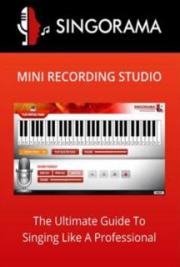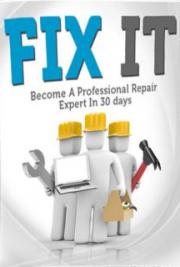"Eliminate Tennis Elbow Pain In As Little As 72 Hours And Cure It Completely Within 30 Days, Guaranteed"
"Forget Expensive Physical Therapy, Surgery, Exercise Equipment, Creams, Or Drugs That Just Don't Work -You Too Can Permanently Cure Tennis Elbow With 5 Simple Exercises While Sitting In A Chair At Home Watching Television"
Click HERE for More information.
THE PSYCHOLOGY OF SINGLES AND DOUBLES IN TENNIS.
Singles, the greatest strain in tennis, is the game for two players. It is in this phase of the game that the personal equation reaches its crest of importance. This is the game of individual effort, mental and physical.
A hard 5-set singles match is the greatest strain on the body and nervous system of any form of sport. Singles is a game of daring, dash, speed of foot and stroke. It is a game of chance far more than doubles. Since you have no partner dependent upon you, you can afford to risk error for the possibility of speedy victory. Much of what I wrote under match play is more for singles than doubles, yet let me call your attention to certain peculiarities of singles from the standpoint of the spectator.
A gallery enjoys personalities far more than styles. Singles brings two people into close and active relations that show the idiosyncrasies of each player far more acutely than doubles. The spectator is in the position of a man watching an insect under a microscope. He can analyse the inner workings.
The freedom of restraint felt on a single court is in marked contrast to the need for team work in doubles. Go out for your shot in singles whenever there is a reasonable chance of getting it. Hit harder at all times in singles than in doubles, for you have more chance of scoring and can take more risk.
Singles is a game of the imagination, doubles a science of exact angles.
Doubles is four-handed tennis. Enough of this primary reader definition.
It is just as vital to play to your partner in tennis as in bridge. Every time you make a stroke you must do it with a definite plan to avoid putting your partner in trouble. The keynote of doubles success is team work; not individual brilliancy. There is a certain type of team work dependent wholly upon individual brilliancy. Where both players are in the same class, a team is as strong as its weakest player at any given time, for here it is even team work with an equal division of the court that should be the method of play. In the case of one strong player and one weaker player, the team is as good as the strong player can make it by protecting and defending the weaker. This pair should develop its team work on the individual brilliancy of the stronger man.
The first essential of doubles play is to PUT the ball in play. A double fault is bad in singles, but it is inexcusable in doubles. The return of service should be certain. After that it should be low and to the server coming in. Do not strive for clean aces in doubles until you have the opening. Remember that to pass two men is a difficult task.
Always attack in doubles. The net is the only place in the court to play the doubles game, and you should always strive to attain the net position. I believe in always trying for the kill when you see a real opening. "Poach" (go for a shot which is not really on your side of the court) whenever you see a chance to score. Never poach unless you go for the kill. It is a win or nothing shot since it opens your whole court. If you are missing badly do not poach, as it is very disconcerting to your partner.
The question of covering a doubles court should not be a serious one. With all men striving to attain the net all the time every shot should be built up with that idea. Volley and smash whenever possible, and only retreat when absolutely necessary.
When the ball goes toward the side-line the net player on that side goes in close and toward the line. His partner falls slightly back and to the centre of the court, thus covering the shot between the men. If the next return goes to the other side, the two men reverse positions. The theory of court covering is two sides of a triangle, with the angle in the centre and the two sides running to the side-lines and in the direction of the net.
Each man should cover overhead balls over his own head, and hit them in the air whenever possible, since to allow them to drop gives the net to the other team. The only time for the partner to protect the overhead is when the net man "poaches," is outguessed, and the ball tossed over his head. Then the server covers and strives for a kill at once.
Always be ready to protect your partner, but do not take shots over his head unless he calls for you to, or you see a certain kill. Then say "Mine," step in and hit decisively. The matter of overhead balls, crossing under them, and such incidentals of team work are matters of personal opinion, and should be arranged by each team according to their joint views. I only offer general rules that can be modified to meet the wishes of the individuals.
Use the lob as a defence, and to give time to extricate yourself and your partner from a bad position. The value of service in doubles cannot be too strongly emphasized since it gives the net to the server. Service should always be held. To lose service is an unpardonable sin in first-class doubles. All shots in doubles should be low or very high. Do not hit shoulder-high as it is too easy to kill. Volley down and hard if possible. Every shot you make should be made with a definite idea of opening the court.
Hit down the centre to disrupt the team work of the opposing team; but hit to the side-lines for your aces.
Pick one man, preferably the weaker of your opponents, and centre your attack on him and keep it there. Pound him unmercifully, and in time he should crack under the attack. It is very foolish to alternate attack, since it simply puts both men on their game and tires neither.
If your partner starts badly play safely and surely until he rounds to form. Never show annoyance with your partner. Do not scold him. He is doing the best he can, and fighting with him does no good. Encourage him at all times and don't worry. A team that is fighting among themselves has little time left to play tennis, and after all tennis is the main object of doubles.
Offer suggestions to your partner at any time during a match; but do not insist on his following them, and do not get peevish if he doesn't. He simply does not agree with you, and he may be right. Who knows?
Every doubles team should have a leader to direct its play; but that leader must always be willing to drop leadership for any given point when his partner has the superior position. It is policy of attack not type of stroke that the leader should determine.
Pick a partner and stick to him. He should be a man you like and want to play with, and he should want to play with you. This will do away with much friction. His style should not be too nearly your own, since you double the faults without greatly increasing the virtues.

"How to Use Ancient Zen Master Secrets, Combined with Modern Day Quantum Physics, to Catapult Your Tennis Mental MoJo to New Heights, and Bask in the Glory of Dominating Your Competition, Whether You're a Rank Beginner or an Elite Tour Pro...Almost Overnight Guaranteed."
"Finally, the Renegade Tennis Mental Guru Reveals the Real Reason Your Game Sucks, Why Traditional Tennis Psychology is Useless, and How You Can Turn it Around by Utilizing Secret Underground Tactics."
For more information, click HERE THE DRIVE IN TENNIS.
The forehand drive is the opening of every offensive in tennis, and, as such, should be most carefully studied. There are certain rules of footwork that apply to all shots. To reach a ball that is a short distance away, advance the foot that is away from the shot and thus swing into position to hit. If a ball is too close to the body, retreat the foot closest to the shot and drop the weight back on it, thus, again, being in position for the stroke. When hurried, and it is not possible to change the foot position, throw the weight on the foot closest to the ball.
The receiver should always await the service facing the net, but once the serve is started on the way to court, the receiver should at once attain the position to receive it with the body at right angles to the net. The forehand drive is made up of one continuous swing of the racquet that, for the purpose of analysis, may be divided into three parts:
1. The portion of the swing behind the body, which determines the speed of the stroke.
2. That portion immediately in front of the body which determines the direction and, in conjunction with weight shift from one foot to the other, the pace of the shot.
3. The portion beyond the body, comparable to the golfer's "follow through," determines spin, top or slice, imparted to the ball.
All drives should be topped. The slice shot is a totally different stroke.
To drive straight down the side-line, construct in theory a parallelogram with two sides made up of the side-line and your shoulders, and the two ends, the lines of your feet, which should, if extended, form the right angles with the side-lines. Meet the ball at a point about 4 to 4 1/2 feet from the body immediately in front of the belt buckle, and shift the weight from the back to the front foot at the MOMENT OF STRIKING THE BALL. The swing of the racquet should be flat and straight through. The racquet head should be on a line with the hand, or, if anything, slightly in advance; the whole arm and the racquet should turn slightly over the ball as it leaves the racquet face and the stroke continue to the limit of the swing, thus imparting top spin to the ball.
The hitting plane for all ground strokes should be between the knees and shoulders. The most favourable plane is on a line with the waist. Never step away from the ball in driving cross court. always throw your weight in the shot.
The forehand drive from the left court is identically the same for the straight shot down your opponent's forehand. For the cross drive to his backhand, you must conceive of a diagonal line from your backhand corner to his, and thus make your stroke with the footwork as if this imaginary line were the side-line. In other words, line up your body along your shot and make your regular drive. Do not try to "spoon" the ball over with a delayed wrist motion, as it tends to slide the ball off your racquet.
All drives should be made with a stiff, locked wrist. There is no wrist movement in a true drive. Top spin is imparted by the arm, not the wrist.
The backhand drive follows closely the principles of the forehand, except that the weight shifts a moment sooner, and the R or front foot should always be advanced a trifle closer to the side-line than the L so as to bring the body clear of the swing. The ball should be met in front of the right leg, instead of the belt buckle, as the great tendency in backhand shots is to slice them out of the side-line, and this will pull the ball cross court, obviating this error. The racquet head must be slightly in advance of the hand to aid in bringing the ball in the court. Do not strive for too much top spin on your backhand. I strongly urge that no one should ever favour one department of his game, in defence of a weakness. Develop both forehand and backhand, and do not "run around" your backhand, particularly in return of service. To do so merely opens your court. If you should do so, strive to ace your returns, because a weak effort would only result in a kill by your opponent. Do not develop one favourite shot and play nothing but that. If you have a fair cross-court drive, do not use it in practice, but strive to develop an equally fine straight shot. Remember that the fast shot is the straight shot. The cross drive must be slow, for it has not the room owing to the increased angle and height of the net. Pass down the line with your drive, but open the court with your cross-court shot.
Drives should have depth. The average drive should hit behind the serviceline. A fine drive should hit within 3 feet of the baseline. A cross-court drive should be shorter than a straight drive, so as to increase the possible angle. Do not always play one length drive, but learn to vary your distance according to your man. You should drive deep against a baseliner, but short against a net player, striving to drop them at his feet as, he comes in.
Never allow your opponent to play a shot he likes if you can possibly force him to one he dislikes.
Again I urge that you play your drive:
1. With the body sideways to the net.
2. The swing flat, with long follow through.
3. The weight shifting just as the ball is hit.

Master any mentally challenging situation in a Tennis match Click
HERE for more information .
THE VOLLEY AND OVERHEAD SMASH
The net attack is the heavy artillery of tennis. It is supposed to crush all defence. As such it must be regarded as a point-winning stroke at all times, no matter whether the shot is volley or smash.
Once at the net hit from the point at the first opportunity given to get the racquet squarely on the ball. All the laws of footwork explained for the drive are theoretically the same in volleying. In practice you seldom have time to change your feet to a set position, so you obviate trouble by throwing the weight on the foot nearest to the ball and pushing it in the shot.
Volleys are of two classes: (1) the low volley, made from below the waist; and (2) the high volley, from the waist to the head. In contradistinction to the hitting plane classification are the two styles known as (1) the deep volley and (2) the stop volley.
All low volleys are blocked. High volleys may be either blocked or hit. Volleys should never be stroked. There is no follow through on a low volley and very little on a high one.
You will hear much talk of "chop" volleys. A chop stroke is one where the racquet travels from above the line of flight of the ball, down and through it, and the angle made behind the racquet is greater than 45 degrees, and many approach 90 degrees. Therefore I say that no volleys should be chopped, for the tendency is to pop the ball up in the air off any chop. Slice volleys if you want to, or hit them flat, for both these shots are made at a very small angle to the flight-line of the ball, the racquet face travelling almost along its plane.
In all volleys, high or low, the wrist should be locked and absolutely stiff. It should always be below the racquet head, thus bracing the racquet against the impact of the ball. Allow the force of the incoming shot, plus your own weight, to return the ball, and do not strive to "wrist" it over. The tilted racquet face will give any required angle to the return by glancing the ball off the strings, so no wrist turn is needed.
Low volleys can never be hit hard, and owing to the height of the net should usually be sharply angled, to allow distance for the rise. Any ball met at a higher plane than the top of the net may be hit hard. The stroke should be crisp, snappy, and decisive, but it should stop as it meets the ball. The follow through should be very small. Most low volleys should be soft and short. Most high volleys require speed and length.
The "stop" volley is nothing more than a shot blocked short. There is no force used. The racquet simply meets the oncoming ball and stops it. The ball rebounds and falls of its own weight. There is little bounce to such a shot, and that may be reduced by allowing the racquet to slide slightly under the ball at the moment of impact, thus imparting back spin to the ball.
Volleying is a science based on the old geometric axiom that a straight line is the shortest distance between two points. I mean that a volleyer must always cover the straight passing shot since it is the shortest shot with which to pass him, and he must volley straight to his opening and not waste time trying freakish curving volleys that give the base-liner time to recover. It is Johnston's great straight volley that makes him such a dangerous net man. He is always "punching" his volley straight and hard to the opening in his opponent's court.
A net player must have ground strokes in order to attain the net position. Do not think that a service and volley will suffice against first-class tennis.
Strive to kill your volleys at once, but should your shot not win, follow the ball 'cross and again cover the straight shot. Always force the man striving to pass you to play the hardest possible shot.
Attack with your volleys. Never defend the ball when at the net. The only defensive volley is one at your feet as you come in. It is a mid-court shot. Volleys should win with placement more than speed, although speed may be used on a high volley.
Closely related to the volley, yet in no way a volley stroke, is the overhead smash. It is the Big Bertha of tennis. It is the long range terror that should always score. The rules of footwork, position, and direction that govern the volley will suffice for the overhead. The swing alone is different. The swing should be closely allied to the slice service, the racquet and arm swinging freely from the shoulder, the wrist flexible and the racquet imparting a slight twist to the ball to hold it in court. The overhead is mainly a point winner through speed, since its bounce is so high that a slow placement often allows time for a recovery.
Do not leap in the air unnecessarily to hit overhead balls. Keep at least one foot, and when possible both feet, on the ground in smashing, as it aids in regulating the weight, and gives better balance. Hit flat and decisively to the point if desired.
Most missed overhead shots are due to the eye leaving the ball; but a second class of errors are due to lack of confidence that gives a cramped, half-hearted swing. Follow through your overhead shot to the limit of your swing.
The overhead is essentially a doubles shot, because in singles the chances of passing the net man are greater than lobbing over his head, while in doubles two men cover the net so easily that the best way to open the court is to lob one man back.
In smashing, the longest distance is the safest shot since it allows a greater margin of error. Therefore smash 'cross court when pressed, but pull your short lobs either side as determined by the man you are playing.
Never drop a lob you can hit overhead, as it forces you back and gives the attacking position to your opponent. Never smash with a reverse twist, always hit with a straight racquet face and direct to the opening.
Closely connected to the overhead since it is the usual defence to any hard smash, is the lob.
A lob is a high toss of the ball landing between the service-line and the baseline. An excellent lob should be within 6 feet of the baseline.
Lobs are essentially defensive. The ideas in lobbing are: (1) to give yourself time to recover position when pulled out of court by your opponent's shot; (2) to drive back the net man and break up his attack; (3) to tire your opponent; (4) occasionally to, win cleanly by placement. This is usually a lob volley from a close net rally, and is a slightly different stroke.
There is (1) the chop lob, a heavily under-cut spin that hangs in the air. This, is the best defensive lob, as it goes high and gives plenty of time to recover position. (2) The stroke lob or flat lob, hit with a slight top spin. This is the point-winning lob since it gives no time to, the player to run around it, as it is lower and faster than the chop. In making this lob, start your swing like a drive, but allow the racquet to slow up and the face to tilt upward just as you meet the ball. This, shot should seldom go above 10 feet in the air, since it tends to go out with the float of the ball.
The chop lob, which is a decided under cut, should rise from 20 to 30 feet, or more, high and must go deep. It is better to lob out and run your opponent back, thus tiring him, than to lob short and give him confidence by an easy kill. The value of a lob is mainly one of upsetting your opponent, and its effects are very apparent if you unexpectedly bring off one at the crucial period of a match.
Thank you very much for spending your time to read this ebook I hope that it will help to improve your knowledge and skills in Tennis Playing.The aim for this book was to create something interesting and fun to read .And those Tennis player who is willing to invest a bit of money to further improve their skills and game playing can use the recommended Sites. I personally love playing Tennis . And hope that this ebook can be enjoyed by Tennis lovers too . Cheers !
Best Regard, Lloyd . T.Y





 Master any mentally challenging situation in a Tennis match Click
Master any mentally challenging situation in a Tennis match Click


